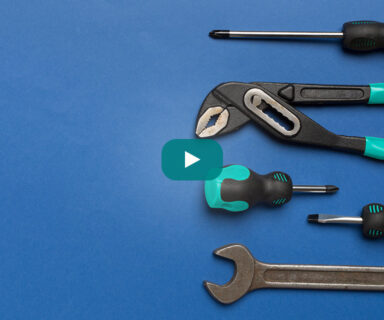Integrated demand generation is no longer just about diversifying content, promo messaging and lists. You have a lot more options to feed the top of your funnel and to move sales down that funnel. Those options now promise greater rewards, but with greater inherent risks.
This series is intended to help you understand the new market dynamics at play, and present you with resources to help navigate the best decisions for your integrated demand generation strategy.
 Here’s a description of a smart, traditional integrated demand generation strategy:
Here’s a description of a smart, traditional integrated demand generation strategy:
First, you develop a variety of content assets true to your brand that illustrate how your solutions solve problems for your prospective customers. Then, you develop a smart outreach campaign to promote those assets, with a diverse mix of media partners, possibly including keyword marketing. You even do some brand marketing with the goal of boosting recognition — and ultimately response. The leads you drive from these efforts go into the top of a defined sales funnel. You test, measure and refine – and you know the response and conversion metrics that you need to see to be successful. Tried and true, and it works.
At least it did work for a long time. But two developments over the past few years have changed the landscape …
2 new developments changing the demand generation landscape
There are a lot more sources of purchase intent intelligence – Leveraging this data and tapping into prospect buying signals allows you to create more opportunities beyond those you’re accessing via traditional inbound and outbound marketing. Intent data allows you to expand the definition of “prospective buyer” to include not just “users who already interacted with my brand or content” but “users who show a strong likelihood of being receptive to my solution or offers.” This sounds a lot like old school prospect identification. What makes it “new school” is the sophistication of the intent data you can now tap into. You’re chasing after the same fish, but now the pond is much smaller, and you have a radar that shows you exactly where to drop your line.
There are more and more sophisticated tools and systems to help drive more prospects into the bottom of the funnel, ultimately yielding more ROI from intent-based data. There is a veritable cottage industry of new CRM and marketing automation tools, sophisticated lead scoring methodologies, and a wide variety of software add-ons that help you identify, influence and engage prospects already in your sales database(s). But every tool you choose affects every other tool you use – and potentially affects sales productivity, the lifeblood of any business. What good is having all these tools in your stack if all they’re doing is adding complexity in your ability to actually manage the data flowing through? Or worse, what happens if these systems aren’t a right fit or don’t integrate with your other apps? There are major risk vs. reward considerations that must be taken into account here.
New demand generation options can help marketers dramatically impact revenue
 So, while “old” demand generation integration mostly meant working with multiple media partners to mitigate the risk of having too many eggs in one basket, you now have a lot more options to truly own a market and dramatically impact revenue. But with more options comes both bigger potential upside — and bigger risk for costly missteps. Consider consolidating your partnerships only to include providers who can offer both old school and new school demand gen. And always carefully consider the source of the intent data you’re choosing – as you know all data is *not* created equal.
So, while “old” demand generation integration mostly meant working with multiple media partners to mitigate the risk of having too many eggs in one basket, you now have a lot more options to truly own a market and dramatically impact revenue. But with more options comes both bigger potential upside — and bigger risk for costly missteps. Consider consolidating your partnerships only to include providers who can offer both old school and new school demand gen. And always carefully consider the source of the intent data you’re choosing – as you know all data is *not* created equal.
Providing marketers a perspective on the rapidly changing dynamics in the demand generation marketplace is the reason we’re publishing this series, Demand Excellence. This collection of blogs, videos, slideshares and infographics will provide food for thought as you navigate this new integrated demand generation world and the new market dynamics at play. Over the next few months, as you ramp up your planning for 2017, we’ll be putting the spotlight on integrated demand generation and present you with resources to help navigate the best decisions for your integrated demand generation strategy.
In the meantime, I’ll be sharing my thoughts and industry ideologies on this topic on Twitter and LinkedIn, so be sure to follow me and join in on the discussion.




